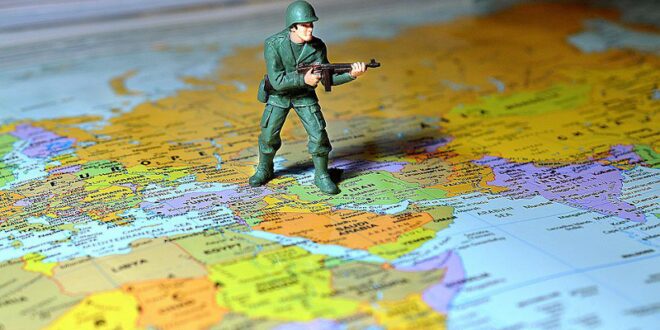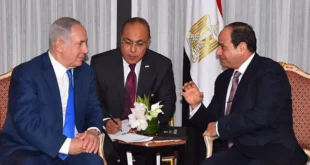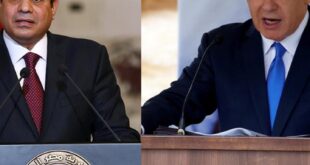The year 2019 saw the first-ever instance of an arms industrial conglomerate from an Arab state—EDGE from the United Arab Emirates (UAE)—entering SIPRI’s list of the top 25 largest arms-producing and military services companies. This is just one illustration of the growing role that some states in the Middle East and North Africa (MENA) play in the global arms trade—not only as arms importers but also increasingly as arms producers and exporters. These developments occur in a region mired in instability and insecurity, rising tensions, and active armed conflicts in Libya, Syria and Yemen.
Building on previous SIPRI work, this topical backgrounder provides an overview of the state of conventional arms transfer controls and small arms and light weapons (SALW) controls in MENA countries. It also explores how these controls could be strengthened in order to help to address security challenges and build confidence in the region. It is part of a current SIPRI project that is mapping arms transfer and SALW control-related assistance in MENA and updating SIPRI’s database of Arms Trade Treaty (ATT)-relevant cooperation and assistance activities. A related commentary, on the role of international assistance in strengthening arms transfer and SALW controls in MENA, will be published soon.
Arms diversion in MENA
Arms diversion refers to the appropriation or rerouting of conventional military materiel contrary to national or international law, including towards illicit markets, leading to a potential change of ownership or control. This can happen at any point in the transfer chain, including after the materiel has come into the possession of the authorized end user. MENA faces several different types of diversion, described below.
Illicit arms transfers that violate arms embargoes
States and non-state actors have been involved in illicit arms transfers, including to recipients that are subject to United Nations Security Council arms embargoes. The UN embargo on Yemen prohibits transfers to non-state armed groups, yet continuous violations have been reported since 2015, both by states and by non-state actors, with the 2022 report by the Panel of Experts noting that some weapons had technical characteristics similar to arms manufactured in Iran.
Multiple transgressions of the UN embargo on Libya have also been documented, including some by Türkiye and the UAE. The 2022 report by the Panel of Experts notes that, while the number of violations diminished, the embargo remained ‘totally ineffective’. As a consequence, significant quantities of arms end up in the hands of non-state actors in Libya.
Illicit arms transfers that violate end-user assurances
Other cases of transfers to armed groups and conflict parties have reportedly involved states ignoring the end-user assurances they provided when they originally acquired the arms. The UAE, for instance, re-exported self-loading rifles it had purchased from Bulgaria to Libyan and Yemeni armed forces between 2011 and 2016. Saudi Arabia and the UAE also reportedly re-exported United States-manufactured armoured vehicles to non-state armed groups engaged in Yemen.
State collapse and battlefield capture
State collapse and battlefield capture are a significant, and potentially the largest, source of illicit weapons in MENA. The collapse of the Libyan state in 2011 and of sections of the Iraqi state in 2003 led to the large-scale looting of national arms and ammunition stockpiles. A study from Conflict Armament Research also found that at least 12 per cent of the weapons recovered from the Islamic State in Iraq and Syria group originated from Iraqi national stockpiles and were probably captured during battle. And in the armed conflict in Yemen, numerous weapons have been captured on the battlefield by armed groups.
Weaknesses in physical security and stockpile management
Weaknesses in physical security and stockpile management (PSSM) procedures also played a part in arms diversion from national stockpiles in Libya and Iraq—and at least some of those weaknesses remain today. Moreover, there are potential gaps in PSSM procedures—although not at a comparable level—even in states with more established control frameworks such as Israel, where arms stolen from the military have been identified in 70 per cent of shooting incidents in 2021.
Arms recipients, producers and suppliers in MENA
Ongoing military build-ups
Both Middle Eastern and North African states continue to rely heavily on imports for their military acquisitions and build-ups. According to the SIPRI Arms Transfers Database, transfers of major conventional weapons to Middle Eastern states have grown considerably over the past 15 years. Seven of the top 25 arms-importing states in 2017–21 (Egypt, Iraq, Israel, Qatar, Saudi Arabia, Türkiye and the UAE) were in the Middle East. In North Africa, Algeria and Morocco are the main importers, and in 2017–21 they were, respectively, the 11th and 25th largest recipients of major conventional weapons at the global level.
Development of national arms industries and arms exports
Many MENA states have developed—or are seeking to develop—their own arms industries. This has led some of them to establish limited licensed production of major conventional arms and SALW; for example armoured vehicles in Algeria and Egypt, and anti-tank rockets in Jordan. Jordan has also emerged as an exporter of major arms. According to SIPRI’s data, it was the 25th largest supplier in 2017–21, although this was mainly due to the export of second-hand equipment (e.g. combat helicopters and armoured personnel carriers).
MENA states have also been able to build significant domestic arms-production capabilities. Israel is the most successful and long-standing example, with the most self-reliant and technologically advanced arms industry in the region. Israel remains the main arms exporter in MENA and has been among the world’s 10 largest suppliers of major conventional weapons since the 2000s.
Türkiye has also been quite successful in developing its own arms industry and is able to partly or completely produce a wide range of weapon systems (e.g. armoured vehicles, ships, artillery, missiles, and uncrewed aerial vehicles, UAVs). Türkiye was the 12th largest supplier of major arms for 2017–21.
Iran has developed the capacity to produce different categories of both major arms and SALW, including tactical and combat UAVs. Iranian UAVs have recently come under the spotlight following reports of their deployment by Russia in Ukraine. Saudi Arabia and the UAE have used offset agreements to foster the development of domestic production capabilities. Both states are currently able to produce domestically a diverse range of military equipment, although the UAE has been more successful both as an emerging arms producer and as an arms exporter.
An overview of MENA states’ arms transfer and SALW control systems
Given the tensions, military build-ups and challenges in controlling arms proliferation in MENA, there is a clear need for effective arms transfer and SALW control systems. States and multilateral organizations have developed a number of standards and guidelines for what such systems should include in order to regulate arms transfers and prevent diversion.
The ATT sets norms and standards for effective conventional arms transfer controls, and the UN Programme of Action on SALW (UNPOA) has provisions that cover all aspects of the life cycle of a small arm or light weapon, from its manufacture and storage to its sale, transfer and disposal. Both instruments require states to submit reports on measures taken at the national level to implement these standards.
At the regional level, in 2002 the League of Arab States (LAS) established an Arab Model Law on Weapons, Ammunitions, Explosives and Hazardous Material. However, no reporting requirements are attached to this instrument.
Public information on the content of a state’s arms transfer and SALW control system is essential for assessing its strengths and weaknesses, and is a key component of an effective system. It can also help to foster trust and confidence between states.
However, participation and engagement with the ATT and the UNPOA and their associated reporting requirements remain relatively low in the region, which leads to a lack of transparency. Only two countries in MENA—Lebanon and Palestine—are states parties to the ATT, but Lebanon has not submitted the required report on its implementation of the treaty and Palestine has not made its report publicly available.
Regarding the UNPOA, less than half of MENA states submitted reports in both 2020 and 2022, and states that do report often provide little detail. There were also few contributions from MENA states to the UN Exchange of National Legislation on Transfer of Arms, Military Equipment and Dual-use Goods and Technology from its creation in 2002 until 2016, when it became defunct, with only 5 of the 20 MENA states having shared any legislation.
Judging by the information that is available via reports to the UNPOA submitted by MENA states and legislation that is available online, some of the arms transfer control systems in the region appear to be more mature than others. Most states in MENA have established provisions covering international arms transfers as well as stockpile management, marking and record-keeping.
However, while national legislation in several MENA states limits the types of weapon that civilians can legally possess, it potentially lacks a comprehensive framework for controls encompassing all conventional arms and all stages of a weapon’s life cycle. With the exceptions of Algeria, Israel, Moroccoand Türkiye, it is difficult to identify a military control list establishing which items are subject to transfer controls.
Based on publicly available information, there are also gaps in most national legislations on arms brokering, whereby a person or an entity acts as an intermediary to facilitate an arms transfer. Yet brokering practices, especially if unregulated, can play a role in fuelling conflict and human rights abuses. Moreover, the effective implementation of relevant provisions is often lacking even when control frameworks are in place, as the diversion patterns illustrate.
Strengthening arms transfer and SALW control systems in MENA: The role of international assistance
Available information suggests that there are gaps and weaknesses in all MENA states’ national arms transfer and SALW control frameworks. Nevertheless, there appears to be some interest in the UNPOA, given the high level of participation in the Biennial Meetings of States (BMS). Eighteen of the 20 MENA states were represented at BMS7 in 2021, and 16 attended BMS8 in 2022, and they showed engagement by making multiple statements at both these meetings. Bahrain, Libya, Israel, Türkiye and the UAE have also signed the ATT, and Türkiye has repeatedly indicated its intention to eventually ratify the treaty.
International assistance and cooperation can help MENA states to strengthen their national frameworks, and some have already requested it through the ATT or the UNPOA. For example, in their latest UNPOA reports, both Saudi Arabia and the UAE ask for assistance in multiple fields, including controls on manufacture and international transfers. The provision of international assistance to MENA states and lessons learned on how to better structure and target assistance work in the region will be explored in more detail in the next commentary in this series.
Arms transfer and SALW control systems cannot address all of the challenges identified in this topical backgrounder, such as diversion after state collapse and illicit arms transfers in violation of arms embargoes. However, they can contribute to closing some of the gaps that enable weapons to reach illicit markets.
 Eurasia Press & News
Eurasia Press & News




